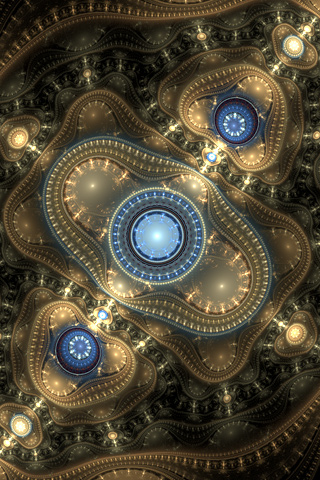 Ancient Empires
Ancient Empires
Man’s civilizing efforts, as detailed and very advanced though they have been at certain times, have been interrupted, quite abruptly, by natural seismic occurrences on our planet. Entire continents moving thousands of miles in a period of a few days can produce earthquakes more severe than anything Richter has been working on as a scale! Between five and 25,000 years seems to be the interval between these seismic reapportionments of the Earth’s land masses, wherein the entire crust slips into a new position on the underlying magma of the planet. Every part of the world is affected by such an event.
76000 – 24000 B.C. Lemurian Civilization:
Lemuria was an island which embraced all of present-day Australia, New Zealand, the Philippines, Oceania, western North America, and everything between. It was destroyed by earthquakes and then submerged about 26,000 years ago. Man’s first civilization arose on the continent of Lemuria 78,000 years ago and reached heights so great that our present civilization can barely be considered a civilization when compared to it. Government, religion, and science achieved such perfection as to be far beyond our present comprehension. Western Civilization is only about 2,500 years old and has narrowly survived its power-seeking rulers and priests. Our science and technology are but in their infancy and as yet consist of but relatively few rediscoveries. The religion of Lemuria was established on the laws of the universe by Christ Himself when He ruled Lemuria under the name Melchizedek.
22500 – 8500 B.C. Atlantean Civilization:
After the destruction of Lemuria, Atlantis grew to be a great nation, which subsequently proved to be the world’s second-ranking civilization. It flourished for some 14,000 years until its submersion about 10,500 years ago. The name of this nation was Poseid, and it was the offspring of the colony which the Pfrees (overly practical) had originally established.
The nation of Poseid was inventive far beyond the wildest imaginings of modern scientists. Their fantastically advanced technology afforded consummate leisure, comfort, and a vast abundance of material things. Unfortunately, the people were much too preoccupied with the pursuit of physical pleasures and with the accumulation of luxurious possessions to take advantage of the opportunity to attain citizenship, and this shortcoming ultimately resulted in their downfall. Internal conflict arose when large numbers of Katholis (overly idealistic) deserted their cities in South and Central America and migrated to Poseid in order to escape their savagely warlike neighbors. The Katholi priests set about to bring Poseid under their sway, but they only succeeded in destroying the governmental and economic system which produced the wealth and luxuries they sought to usurp. Civil and religious warfare vexed the land until it submerged beneath the ocean waves.
When Atlantis sank in a localized earthquake, it left all the rest of the globe impoverished so far as technology was concerned. Nobody else knew how to duplicate that technology; so many of the things that had been used world-wide simply didn’t exist any longer. Even though technology gradually diminished in the rest of the world, they managed to be civilized towards one another. But then 3,000 years after the sinking of Atlantis came a world-wide reapportionment of the land masses.
5500 B.C. Osirian and Rama Nations:
The third greatest civilization was the pre-dynastic Egyptian culture, known as Osiris, which was greatly different from the records that we are able to find of the various dynasties. The fourth greatest civilization was the Rama Empire in the Indian sub-continent. The common people in India then had an entirely different philosophy than the educated ruling families who, incidentally, were members of the Brotherhoods.
The pre-dynastic Egyptian culture was concurrent with the Rama Empire and both were concurrent with the end times of the Atlantean civilization. They were known as the three kings. Atlantis was predominantly a very practical group of people. The people in the Rama Empire of India were much more idealistic than they were either practical or mentally oriented. The Osirian nation was primarily noted for its use of mental techniques in a positive way.
The ancient Rama Empire in India became the fourth-ranking civilization under a dynasty of enlightened leaders who for a period of several centuries suppressed the priesthood. The Rama regime and predynastic Egypt had both managed to salvage some of their culture after the fall of Atlantis, but the rest of the world was reduced to a condition of brutal struggle for survival. The colonies of the world were irretrievably shut off from the technology of Atlantis, and in a few generations they reverted to a stone age-existence. The few manufacturing facilities not destroyed by world-wide earthquakes and tidal waves soon deteriorated from lack of raw materials to feed them. Stone replaced smelted metals for tools, and all too soon subsequent generations couldn’t believe anything other than stone had ever been used. Egypt and India were precariously spared from the far-reaching upheaval, and their weakened governments gradually succumbed to evil priests and war lords.
That last reapportionment 7,500 years ago put an end to the Rama Empire in India as well as the Osirian nation in the Mediterranean basin. Today, what we consider ancient history only goes back to about that cataclysm. What we commonly refer to as the “cradle” of civilization in the region of the Tigris and Euphrates Rivers of today was people coming back to some semblance of civilization and culture.
The Adelphi Organization

